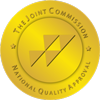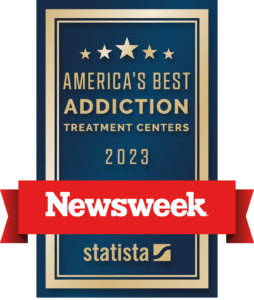Opiates and Anxiety: Understanding This Co-Occurring Condition
According to the Addiction and Depression Association of America (ADAA), 40 million adults in the United States suffer from an anxiety disorder every year. This equates to more than 18% of individuals over 18 years of age in America. However, although so many individuals suffer from the effects of an anxiety disorder, only a fraction of them receive treatment for their symptoms. This is unfortunate, especially given the fact that those with mental health disorders may be at risk for developing other disorders, such as substance use disorders (SUDs). In fact, many individuals who suffer from anxiety also deal with opiate dependence. But opiates and anxiety can be a very dangerous combination. So, treatment is critical to the well-being of those who suffer from these co-occurring disorders.
What is an Anxiety Disorder?
An anxiety disorder is a mental health disorder that involves intense feelings of fear, excessive anxiety, irrational dread, and behavioral disturbances. A person who has an anxiety disorder may have specific triggers that may bring about symptoms of anxiety. But, there are also disorders that cause these symptoms to occur without any specific triggers being present.
When it comes to talking about anxiety, it’s important to establish the difference between experiencing anxiety and having an anxiety disorder. The truth of the matter is that anxiety is one of the body’s natural responses. It is completely natural, even normal, for people to feel the effects of anxiety when challenges or stressful situations occur. For example, a person may become anxious before a test or feel nervous when meeting someone new. Anxiety may strike an individual who is preparing for a speech or presentation.
But this type of occasional anxiety isn’t the same as having an anxiety disorder. Some individuals experience persistent symptoms of anxiety. These include both emotional and physical symptoms. The effects of anxiety disorders can occur in intense measures, even in situations that don’t generally cause natural feelings of anxiety.
In many cases, people who suffer from an anxiety disorder also suffer from depression. This can cause major issues in the lives of those who deal with excessive anxiety. It can also lead to serious emotional, mental, and physical health challenges.
There are multiple types of anxiety disorders. They include general anxiety disorder (GAD), panic disorder, obsessive-compulsive disorder (OCD), post-traumatic stress disorder (PTSD), social anxiety disorder (also known as social phobia), and other specific phobias.
General Anxiety Disorder (GAD)
Those who suffer from this type of anxiety disorder often experience intense and severe feelings of worry and concern about various things. Individuals who have GAD may constantly worry about the possibility of disaster or misfortune. They may express excessive concern about money or family. Often, these feelings of worry and general concern are uncontrollable.
While those who have GAD can usually function fairly normally (hold jobs, etc.), their symptoms may prevent them from doing certain things. Individuals with general anxiety disorder may avoid certain things like travel or social gatherings. They may have trouble doing certain day-to-day tasks because of their symptoms.
Individuals who are living with general anxiety disorder may experience:
- Irritability
- Shakiness
- Headaches
- Restlessness
- Stomach aches
- Lightheadedness
- Tension in muscles
- Excessive sweating
- A sense of being “on-edge”
- Trouble focusing and concentrating
- Sleep disturbances (i.e. insomnia, dissatisfying sleep, etc.)
Professionals are not certain of the reasons for the development of GAD. But, it is believed that one’s environment, childhood experiences, past trauma, and family background may be contributing factors.
The Anxiety and Depression Association of America (ADAA) states that 6.8 million adults suffer from general anxiety disorder. That means that over 3% of the United States population has this disorder. Still, despite the challenging effects of GAD, less than half of the individuals who suffer from it actually get professional help.
It’s not uncommon for people who have GAD to also have depression. Also, it’s worth noting that this anxiety disorder tends to affect more women than men. In fact, the likelihood of GAD in women is about twice the likelihood of general anxiety disorder in men.
Obsessive-Compulsive Disorder (OCD)
OCD is a type of anxiety disorder that is characterized by compulsive and obsessive behavior. Individuals who have obsessive-compulsive disorder often experience uncontrollable and recurring thoughts. They may feel the need to repeat certain actions and behaviors, having an urge that they cannot control.
The recurring thoughts a person has when dealing with OCD are known as obsessions. Often, these thoughts and urges cause anxiety. People may obsess over a number of things. For example, an individual who has OCD may obsess over having things in a specific order. They may feel the urge to make sure things are symmetrical and perfectly straight or even. OCD can also cause people to have aggressive thoughts about themselves or others.
A compulsion is a repeated behavior or action. Those who have obsessive-compulsive disorder may feel a consistent urge to perform these actions, even if others deem these behaviors unnecessary. For instance, an individual with OCD may frequently wash his or her hands. Or, the individual may constantly check to see if a door is locked or is the stove is off. Obsessive-compulsive disorder can also cause individuals to continuously clean or organize.
Often, those who have obsessive-compulsive disorders recognize the obsessions and compulsions that exist in their lives. They may be able to identify these things but, because of the nature of their disorder, they may not be able to control their urges. This is often the case, even in situations where people recognize some of their compulsive behaviors as abnormal or even irrational.
This disorder affects more than 2 million American adults. It is common among both men and women. While the average age of OCD onset is about 19, many children suffer from this disorder, too.
Panic Disorder
This type of anxiety disorder is characterized by frequent, unexpected panic attacks. These attacks are also known as anxiety attacks and they can occur in response to a trigger or seemingly all of a sudden and out of the blue. A panic attack is a sudden occurrence of a strong sense of fear. This intense fear comes quickly and brings with it various symptoms, including the following:
- Sweating
- Shaking
- Trembling
- Dizziness
- Weakness
- Chest pain
- Stomach pain
- Fast heart rate
- Heart palpitations
- Shortness of breath
- Numbness in hands
- Pounding heartbeat
- Feelings of loss of control
Often, those who suffer from panic disorder live in fear of experiencing a panic attack. The effects of this disorder can be so negative that they may prevent individuals from carrying out daily and regular tasks. Sometimes, those who suffer from panic disorder have difficulty performing well at work or in school because of their disorder.
Panic disorder can prevent people from getting enough rest as panic attacks can awaken individuals from sleep.
According to the ADAA, about 2-3% of people in America experience the effects of panic disorder in any given year. Like general anxiety disorder, panic disorder is twice as likely to occur in women than men.
Post-Traumatic Stress Disorder (PTSD)
This disorder occurs in response to a traumatic event. Many people think of PTSD as a disorder that is commonly associated with military veterans. It’s certainly true that many individuals who have been in combat experience post-traumatic stress disorder. However, PTSD affects many people from various walks of life. Individuals who have experienced other types of traumatic occurrences may develop symptoms of post-traumatic stress disorder.
For example, child abuse victims may suffer from PTSD. Victims of sexual assault may suffer from this disorder. An individual who has lost a loved one may develop post-traumatic stress disorder. Also, someone may suffer from PTSD as a result of witnessing a violent or otherwise serious incident, such as a car accident or an assault.
Those who suffer from PTSD may experience frequent flashbacks or nightmares, causing them to relive the experiences that occurred in the past. They may also show signs of avoidance, choosing not to go to places that remind them of their traumatic experiences. Some may avoid being around people who bring back those memories. They may not talk much about what happened in an attempt to prevent thoughts and flashbacks of the events. Certain words or objects can also cause unpleasant memories to occur.
More than 8 million adults in America suffer from PTSD. Again, this disorder can affect people from all walks of life. Veterans, children, women, and men can experience this disorder.
Specific Phobias
A person who has a specific phobia may have such an intense fear of objects or places that they cannot carry out necessary tasks. Specific phobias tend to prevent individuals from controlling the anxiety and fear that they feel.
Likely, you or someone you know has an intense fear of spiders. Maybe you know someone who is extremely afraid of heights. Or perhaps you have a serious fear of snakes. Someone in your life may constantly be afraid of getting sick. When these fears are irrational, debilitating, and cause serious avoidance to occur, they are known as phobias.
Examples of specific phobias include the following:
- Emetophobia (fear of vomiting)
- Health anxiety (fear of becoming ill)
- Agoraphobia (fear of being in an inescapable situation)
- Fear of flying or fear of heights
Some individuals may also fear certain insects, germs, driving, and public transportation. Phobias can cause people to have low self-esteem or a lack of self-confidence. They can also prevent people from being efficient at work and maintaining healthy relationships with friends and family members.
19 million people (8.7% of America’s population) suffer from specific phobias. Just as is the case with general anxiety disorder and panic disorder, women are twice as likely as men to experience specific phobias.
Social Anxiety Disorder
Individuals who have social anxiety disorder have what is also known as social phobia. This disorder is characterized by a major fear of being rejected by others. People who have social anxiety may continuously feel that others will judge or think negatively of them.
Sometimes, individuals who have this type of anxiety disorder appear to be “socially awkward”. They may have difficulty speaking clearly or cohesively around others, stumbling over words and such. Also, social anxiety can cause people to seem “boring” or odd.
Those who have social anxiety may try to avoid social gatherings and situations. But, if there are situations they simply can’t avoid, they may become extremely anxious about being around other people. They might experience symptoms such as:
- Nausea
- Increased heart rate
- Excessive sweating
This type of disorder affects nearly 7% of America’s population, which equates to about 15 million adults in America.
What Are Opiates?
Opiates are drugs that are derived from opium. Drugs that fall under the opiate category include opioids. Typically, medical professionals prescribe opioid medications because of their pain-blocking properties. Individuals who use these medications can gain relief from chronic or other types of pain.
Opioids work by binding to the opioid receptors in the brain. These receptors have various functions, including the regulation of the body’s response to pain and stress. But, when opiate drugs bind to these receptors, the body may experience a temporary reduction or lack of pain.
There are also illicit forms of opioid drugs. Some examples of legal (prescription) and illicit opioids and opiates include:
- Heroin
- Codeine
- Fentanyl
- Dilaudid
- Oxycodone
- Methadone
- Hydrocodone
Opioids cause a calming effect to occur. Their powerful nature often causes individuals to become dependent on them. As a result of this dependence, many people develop opiate addictions.
According to Centers for Disease Control and Prevention (CDC), over 191 million opioid prescriptions were dispensed in 2017 here in America. So, needless to say, millions of Americans use these powerful drugs daily. It’s not hard to see the reason why so many individuals suffer from opioid dependence and even overdose on these drugs. Sadly, many people who suffer from mental health disorders such as anxiety disorder also struggle with opiate misuse. Opiates and anxiety are continuing to cause challenges in the lives of those with co-occurring disorders.
Opiates and Anxiety: The Effects of Addiction and Anxiety Disorder
Individuals who have mental health challenges in addition to substance use disorders have what professionals call a “dual diagnosis” or co-occurring disorders. Sometimes, a mental health disorder leads to the development of substance dependency.
For example, a person who suffers from anxiety may use drugs or alcohol in order to self-medicate. They may turn to substance use to cope with or reduce the effects of their anxiety. As a result of this substance use, individuals may become tolerant of alcohol or drugs. Eventually, this can lead to the development of and addiction. Thus, the individual has a dual diagnosis involving addiction and an anxiety disorder. In other cases, the opposite occurs. Addiction can cause symptoms of depression or anxiety disorders to occur.
In either case, however, the impact of a dual diagnosis can be very serious. Often, co-occurring disorders interact with one another. They may intensify each other’s symptoms. For instance, the compulsive behavior that comes with OCD may begin to involve harmful or dangerous behaviors when a person is under the influence of heroin or another opioid.
Those who suffer from opiate addiction in addition to anxiety disorder may find that their mental health symptoms are even harder to manage. After becoming dependent on opiates, individuals will experience withdrawal symptoms if they stop using these drugs. This can result in increased anxiety and discomfort. So, in order to function “normally”, individuals will feel like they need to continue using opiate drugs. This only repeats the cycle, making it even more challenging to treat and manage the symptoms of anxiety and the effects of addiction.
Since the effects of co-occurring disorders can be so serious, it’s important for individuals to seek professional treatment. But the type of treatment program a person enters is also a very important factor to consider.
Why is Dual Diagnosis Treatment Important?
Treating addiction without treating a co-occurring mental health disorder can be problematic. Likewise, treating mental illness without addressing substance dependence can lead to more challenges. This is mainly due to the fact that individuals who gain the ability to manage mental health symptoms may continue to misuse drugs or alcohol and, eventually, damage their state of mental health. On the other hand, ending addiction does not end the mental illness that accompanies it. So, a person who suffers from a mental health disorder may relapse, resorting back to substance use when their symptoms become overwhelming.
When a person is struggling with the impact of a dual diagnosis, he or she should get professional help. Treatment programs work to help individuals overcome the challenges they face on a daily basis in order to ensure long-term recovery. But, not all programs are the same and each individual has unique needs. Treatment should work to address those specific needs, so, it’s important to find the right kind of program.
If you are suffering from co-occurring disorders, a dual diagnosis program is the best way to approach your needs. This type of program uses various therapies and treatment approaches in order to help those who are dealing with the effects of mental illness and substance use disorder. Therapies in dual diagnosis treatment might involve both individual and group therapy methods. These might include the following:
- Cognitive behavioral therapy (CBT)
- Dialectical behavior therapy (DBT)
- Acceptance and Commitment Therapy (ACT)
When it comes to treating addiction and mental health disorders, professionals can determine the best route of treatment. So, it is best to turn to those who truly understand your needs. This will enable you to begin the road to recovery. Taking a step in the direction of freedom is much easier with help from professionals!
Get the Help You Need Today
If you suffer from an anxiety disorder, you know that the effects of this mental health disorder can be life-altering. The symptoms of anxiety can be detrimental to one’s mental, emotional, and physical health. Dealing with the challenges of disorders such as anxiety can be very difficult. And these challenges are only intensified by the co-occurrence of a substance use disorder.
As we mentioned earlier, the combination of opiates and anxiety can lead to very negative consequences. Individuals who suffer from opiate dependence and an anxiety disorder may experience long-term complications in their overall health. They may also encounter problems in their interpersonal relationships. Addiction often causes individuals to struggle in various areas of their lives. Mental health disorders can also cause these challenges to occur. So, when the two are combined, it’s likely that those who suffer from these co-occurring disorders will struggle to live fulfilling and healthy lives.
Thankfully, however, there is hope for those who suffer from substance dependence and mental health challenges. Here at Sana Lake Recovery Center, we offer a dual diagnosis program that addresses the needs of those who are dealing with an addiction to opiates and anxiety disorder.
We know that our members have specific needs that need to be met in a professional treatment setting. So, we strive to meet each individual’s needs using a comprehensive and compassionate approach. We do not only seek to help people end substance dependence. We also want to help our members to live lives of total freedom and peace.
Therapy is one of the best treatment approaches for both mental illness and addiction. So, we incorporate individual therapy, group therapy, family counseling, and relapse prevention methods in our approach to dual diagnosis treatment. So, if you’re ready to end addiction in your life, contact us today.
References:
https://www.nimh.nih.gov/health/statistics/any-anxiety-disorder.shtml
https://adaa.org/about-adaa/press-room/facts-statistics
https://adaa.org/understanding-anxiety/generalized-anxiety-disorder-gad
https://www.nimh.nih.gov/health/topics/anxiety-disorders/index.shtml
https://www.anxiety.org/generalized-anxiety-disorder-gad
https://adaa.org/understanding-anxiety/obsessive-compulsive-disorder-ocd
https://www.nimh.nih.gov/health/topics/obsessive-compulsive-disorder-ocd/index.shtml
https://adaa.org/understanding-anxiety/panic-disorder
https://www.nimh.nih.gov/health/topics/post-traumatic-stress-disorder-ptsd/index.shtml
https://adaa.org/understanding-anxiety/posttraumatic-stress-disorder-ptsd
https://adaa.org/understanding-anxiety/specific-phobias
https://adaa.org/understanding-anxiety/social-anxiety-disorder
https://www.cdc.gov/drugoverdose/opioids/prescribed.html



